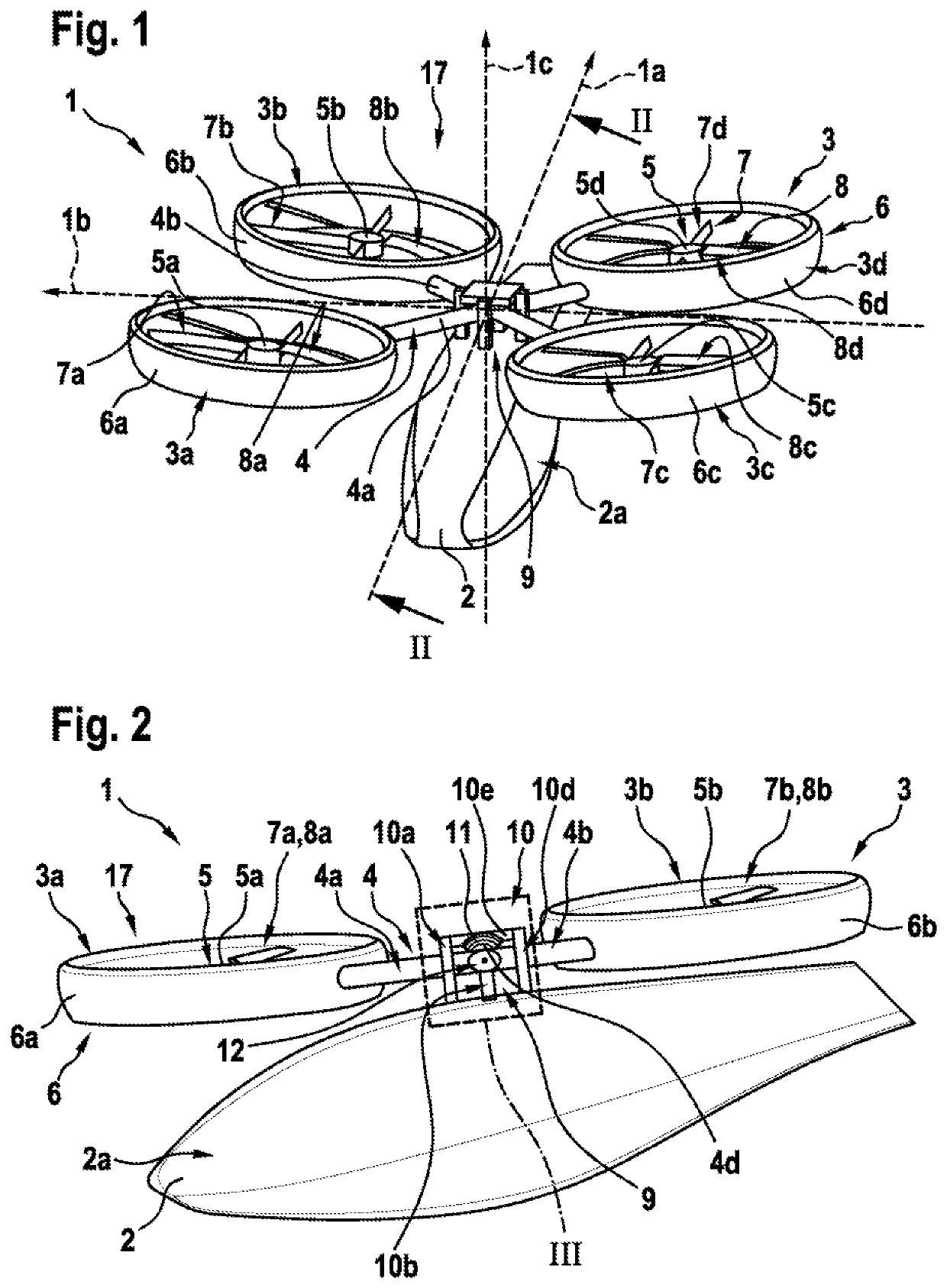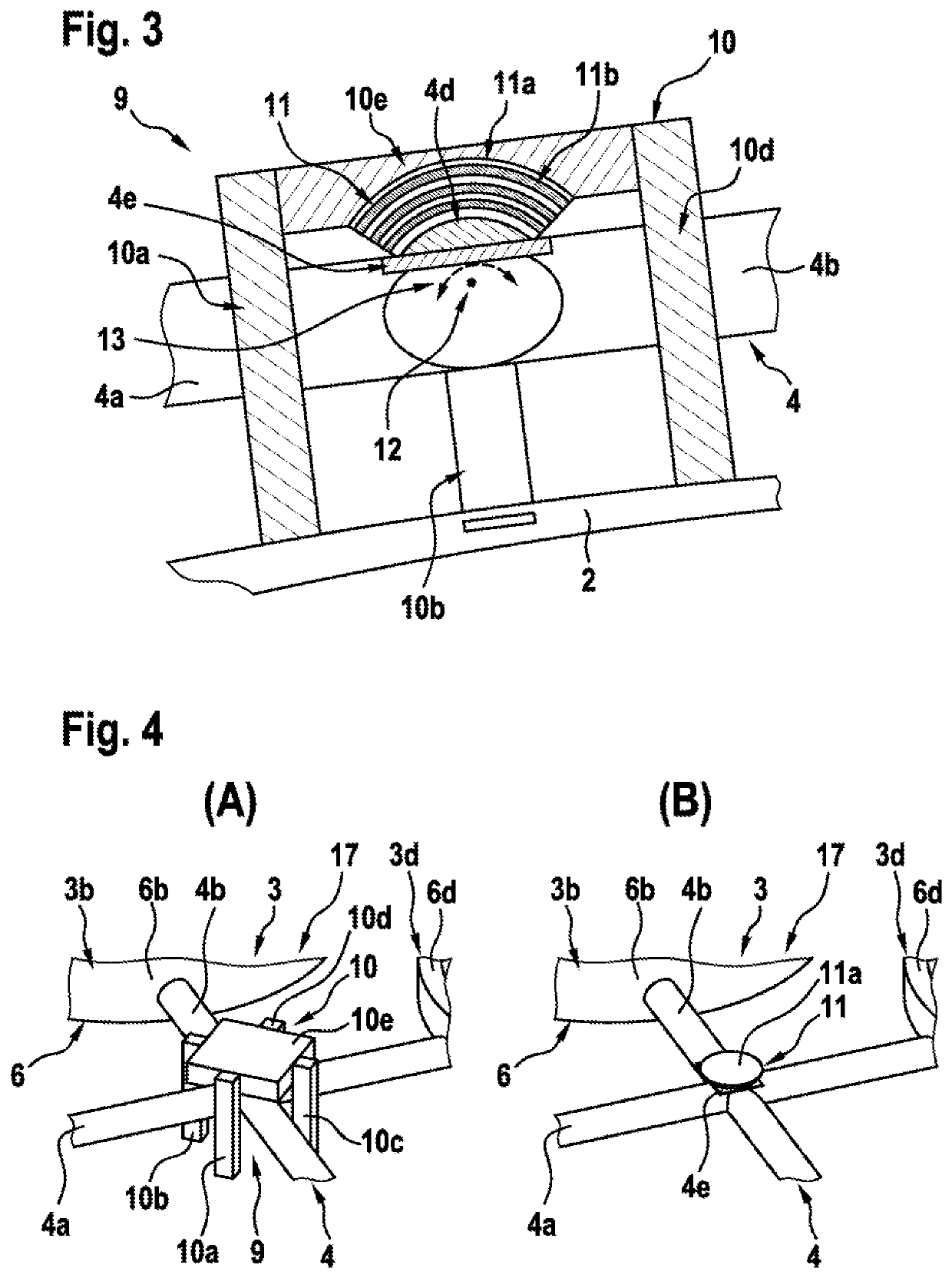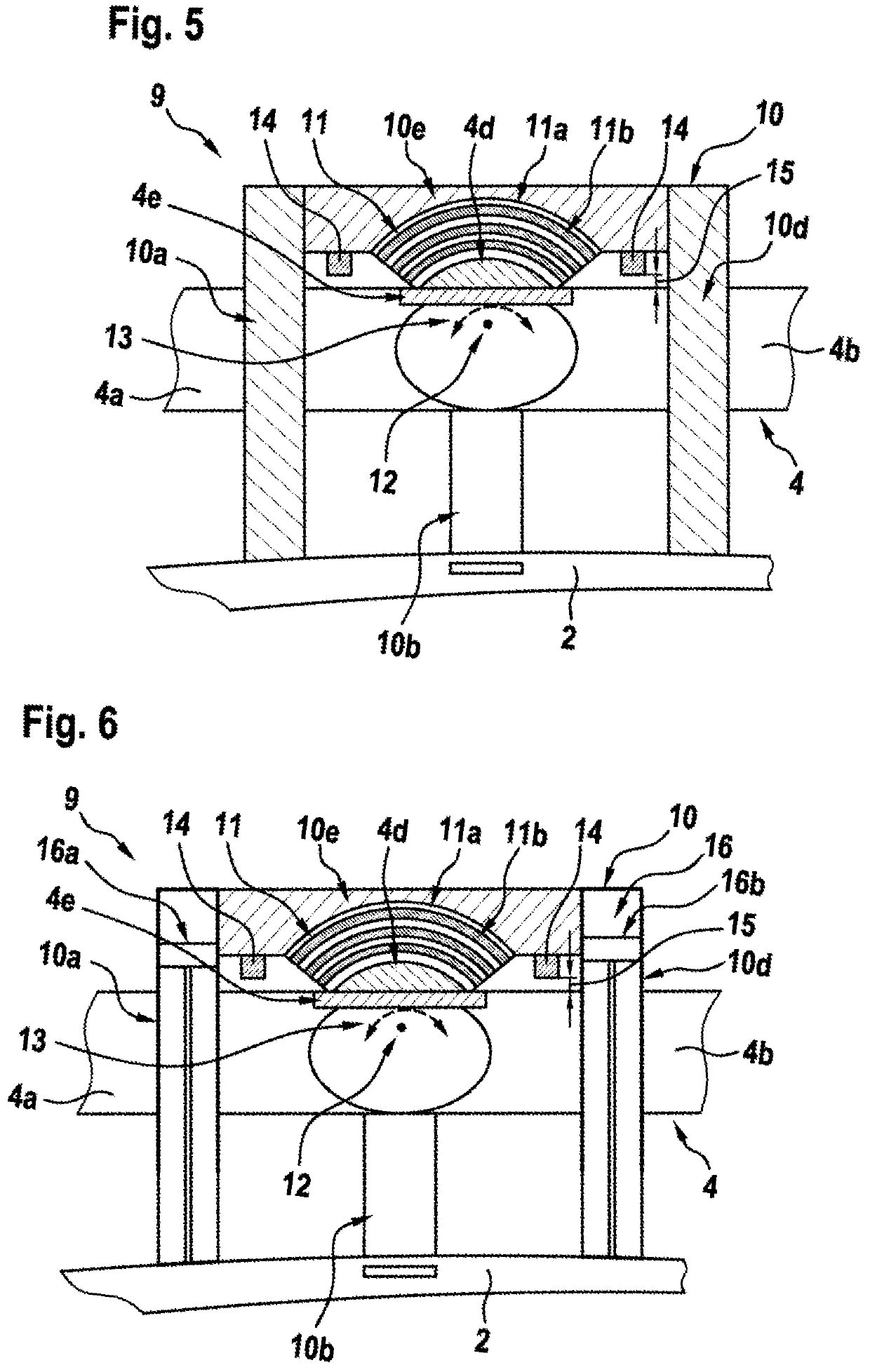Multirotor aircraft with an airframe and a thrust producing units arrangement
a multi-rotor aircraft and thrust producing unit technology, applied in the direction of rotocraft, vertical landing/take-off aircraft, power plant types, etc., can solve the problems of limiting the use of such multi-rotor aircraft, increasing the complexity and weight of the underlying system, and reducing the efficiency of the thrust producing unit arrangement, so as to achieve comparatively low noise, easy to fly, and cost-effective design
- Summary
- Abstract
- Description
- Claims
- Application Information
AI Technical Summary
Benefits of technology
Problems solved by technology
Method used
Image
Examples
Embodiment Construction
[0068]FIG. 1 shows a multirotor aircraft 1 with an aircraft airframe 2 according to the present invention. The airframe 2 defines a supporting structure of the multirotor aircraft 1.
[0069]The airframe 2 has an extension in longitudinal direction 1a, an extension in lateral direction 1b as well as an extension in vertical direction 1c and preferably defines an internal volume 2a. According to one aspect, the internal volume 2a is at least adapted for transportation of passengers, so that the multirotor aircraft 1 as a whole is adapted for transportation of passengers. The internal volume 2a is preferably further adapted for accommodating operational and electrical equipment, such as e. g. an energy storage system that is required for operation of the multirotor aircraft 1.
[0070]It should be noted that exemplary configurations of the internal volume 2a that are suitable for transportation of passengers, but also for accommodation of operational and electrical equipment, are readily av...
PUM
 Login to View More
Login to View More Abstract
Description
Claims
Application Information
 Login to View More
Login to View More - R&D
- Intellectual Property
- Life Sciences
- Materials
- Tech Scout
- Unparalleled Data Quality
- Higher Quality Content
- 60% Fewer Hallucinations
Browse by: Latest US Patents, China's latest patents, Technical Efficacy Thesaurus, Application Domain, Technology Topic, Popular Technical Reports.
© 2025 PatSnap. All rights reserved.Legal|Privacy policy|Modern Slavery Act Transparency Statement|Sitemap|About US| Contact US: help@patsnap.com



